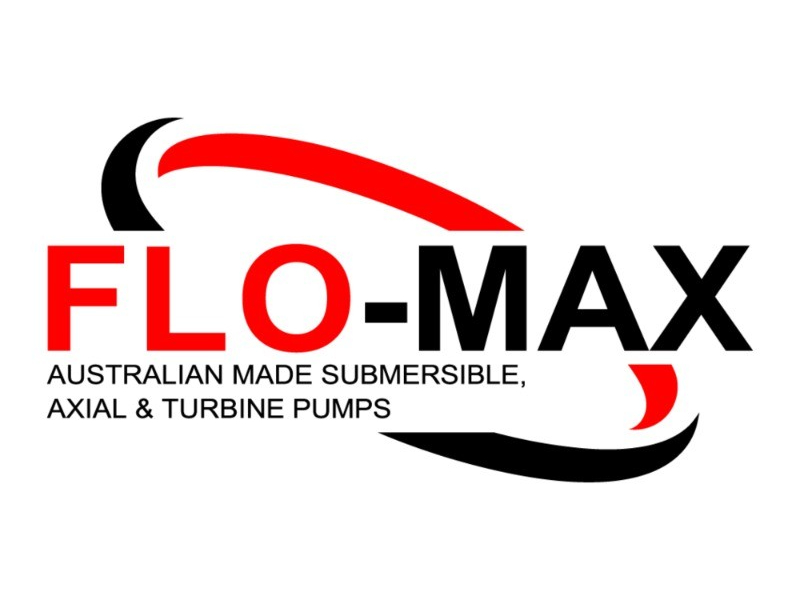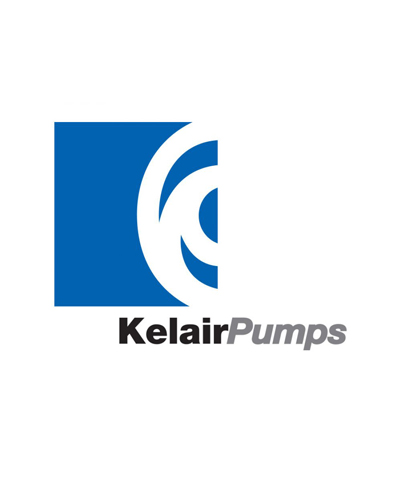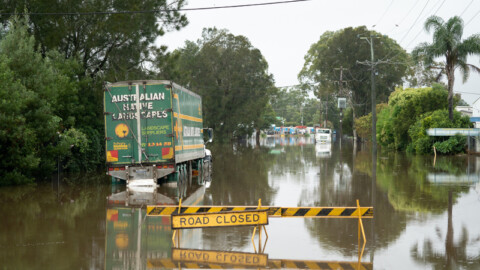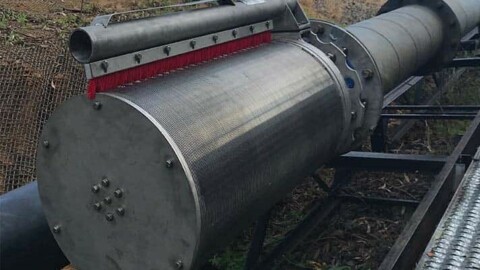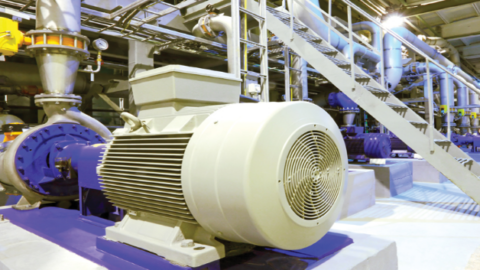Variable speed drives (VSDs) offer energy savings for irrigators. In the past, operational needs informed pump selection decisions to use VSDs. Now as energy prices continue to rise, the opportunity to save costs is driving adoption of the technology. NSW Department of Primary Industries – Agriculture, Water and Irrigation Unit explains how VSDs can reduce operating head and energy usage in pumping plants.
Costs of irrigation
Three main factors adding to pumping costs and energy usage:
- More water than necessary is being pumped and applied to a crop
- The pump is operating away from its best efficiency point (BEP)
- The pumping pressure, or operating head produced, is greater than necessary
Each of these issues can potentially be solved with the installation of a VSD system.
High and low demand pumping
Single speed pumps may be installed for a range of duties — usually sized to meet the greatest output demand. For lower demand use, these pumps will be oversized and operate inefficiently. Energy cost savings can be delivered by using variable speed to regulate the power needed to drive the pump, according to the duty. VSDs allow the pump to be over-designed to meet extreme requirements, without having continuous energy wasted during low demand.
VSDs allow small, rapid and regular variations in pump speed. VSD systems are often a viable option for pumps in highly variable demand situations, such as sequentially delivering water to irrigation units of variable sizes and elevation, and more frequent operations such as filter backflushing. VSDs offer convenience and great potential for energy cost savings if flow adjustments are required during irrigation.
The most popular and cost-effective type of irrigation VSD is the variable frequency drive (VFD), which controls electric motors by varying the frequency and voltage supplied. Other options include multi-pump VSD systems, which can cater for very small to large flow rates.
Potential energy savings realised
As soft-start devices, VFDs have ramp-time adjustments for slow start and stop, can eliminate the problems of water hammer and excess power draw on start-up, and reduce or avoid flow or pressure surges. Reductions in speed can also reduce pump wear, particularly on bearings and seals.
Hydraulic optimisation, such as installing low pressure filters or driplines, can also lower the operating head, but unless the pump has the ability to respond to this lower head, energy savings will not be achievable. VFDs can respond and deliver potential energy savings.
Agronomic benefits
A VFD allows managers to adjust pumps to automatically suit conditions, eliminating unnecessary water delivery to irrigation patches. This improves irrigation scheduling, avoids rootzone waterlogging and water wastage, and increases the potential for high production, while keeping energy costs down.
Taking advantage of positive suction head
Some communal irrigation supply districts (e.g. Coomealla and Curlwaa in the Sunraysia, and Leeton and Griffith in the Murrumbidgee Irrigation Areas) have a level of positive suction head delivered through a pressurised supply main.
When re-pumping is required to achieve a particular pressure and flow (duty point), a VFD makes best use of the supply pressure available. The level of supply pressure is often variable between and within irrigation events, making more permanent options such as fixed changes to pump speed (RPM), unattractive alternatives.
In a study conducted in Coomealla in 2011, it was found that if reasonable supply pressures are available at an outlet (100kPa or greater), it was worth considering installing a VSD to take advantage of this supply pressure and reduce energy costs.
The study found VSDs reduced power consumption with increased inlet supply pressure had no effect on pumping efficiency or power consumption of fixed single speed pumps.
Although a fixed single speed pump requires less power when operating at low flow rates, power consumption was found to still be considerably higher than that of a variable speed driven pump at the same flow rates.
What to know before installing VSDs
Water supply
VFDs make it possible to achieve the very low flow rates that some irrigation systems might require. However, it is important to be aware that water meter accuracy can sometimes be compromised at very low flows (e.g. 150mm propeller meters are inaccurate below 9 L/s) and approval from water supply authorities for diverting such low flows might be required.
Cooling
Cooling has been a particularly important consideration in the past, but new VSD technology now proves simple ventilation and insulation adequate in most cases. In some situations, the pumping unit is deliberately oversized to ensure less heat is generated. Some manufacturers now produce a ventilation attachment to electric motors to provide necessary cooling.
Hydraulic
To fully allow for the variable pressure requirements that can exist in an irrigation system, there should be at least two transducer set points. This is particularly the case for drip irrigation where a certain pressure is needed to operate the irrigation system, and higher pressure is required when backflushing filters and operating the system simultaneously.
One transducer set point located upstream of the filter bank, synchronised with timed backflushing, is required to increase the pump speed to meet backflushing requirements. Another transducer set point is located at a representative point in the field to ensure enough pressure is produced to operate the system. Further transducer points can be an advantage in irrigation systems where large elevation or spatial variations occur.
Pump efficiency
It is important to note that a VFD does not improve the pump efficiency. It simply reduces input energy requirements by producing the flow and pressure combination required at a particular operating time. Replacing worn pumps or impellers, trimming impellers and replacing mismatched pumps can improve pump efficiency.
When a VFD slows a pump down, the reduced flow rate can actually result in the pump operating less efficiently. However, energy use is still reduced, resulting in an energy cost saving. If the irrigation system requires significant flow rate variations or experiences frequently variable supply pressures, then using a VSD to slow down and speed up the pump regularly in response will usually result in the greatest energy savings.
Managing the installation
VFDs can be retro-fitted to existing systems or installed with new systems. No two irrigation systems are alike, and no two VSD requirements are the same. The unique hydraulics of the system must be correctly merged with the unique electrical requirements for every situation. Specific issues for each situation involve identifying the appropriate location and setting of transducer set points.
There are instances of VFD equipment installation where the installer hasn’t realised the intricacies of the hydraulics and pump performance, resulting in a system that is energy inefficient. It is highly recommended that a professional pumping hydraulic design service evaluates your irrigation system before VFD equipment is purchased. It is also important that VFDs are commissioned correctly and all the safety cut-outs are set and tested. These are often overlooked, causing major issues over time.

Figure 1: Wall mounted VSD unit with surrounding foil board.
VSD benefits NSW drip irrigation system
Andy Murdoch owns an 18 hectare vineyard, irrigated in four sections, in Coomealla NSW. With each section a different size, it required constant manual pump adjustment as the irrigation system did not allow for automated changeovers. The installation of a variable speed drive allowed this adjustment to occur automatically between different vineyard sections.
The Coomealla Irrigation Area, near Dareton in south-western NSW, supplies irrigators with moderate to high supply pressures through 75km of communal pipelines. A further advantage of VSD for this grower was a way to take advantage of the pressure available through the delivery system, resulting in further energy savings. It was determined that there was no other way of taking advantage of the moderate to high supply pressures provided in Coomealla. Basic cost calculations proved that installing a VSD would provide a very quick return on investment.
An Allen Bradley Powerflex 753 with two transducer settings, 275 kPa for backflushing, and 170–200 kPa for drip system operation was installed. Gravel filters backflush for 90 seconds every 90 minutes. For cooling, the entire 5x9x3m pump shed was lined with foil board (Figure 1), with two ‘whirly birds’ installed in the roof. The shed was lined to ensure temperatures did not exceed 30 degrees.
Some adjustment on downstream pressure setting was needed with assistance of the internet download from the supplier, the issue was resolved.
In the first year following installation, the average daily energy usage for Mr Murdoch’s vineyard dropped 39 per cent, even though 27 per cent more water was used and pumped to meet crop water requirements compared with the previous season. This was a power saving of approximately $4,000 for the year. The VSD cost $12,000.
Is a VSD system right for me?
When considering a VSD, it’s important to recognise that no two irrigation systems are alike.
Contractors must recognise that all situations are unique, and communication is needed between electrical contractors and irrigation designers. It is also important to note that VSDs are not needed in all situations. Determine how variable the pressure requirements are in a situation to determine the benefits of a VSD. If duty requirements do not vary, resizing the pump or trimming the impeller might be more viable options.
This is an extract from the NSW Department of Primary Industries Agriculture Water and Irrigation Unit’s Primefact ‘Variable speed drives — an energy-saving option for irrigated horticulture’. Acknowledgements to Jeremy Giddings Irrigation Industry Development Officer (Horticulture), Graham Hall, GH Electrical, Mildura Vic; Graeme Zanoni, Mildura Irrigation, Mildura Vic; Robert Welke, Tallemenco Pty Ltd, Adelaide (Pumping & Energy; Hydraulics Consultant); Peter Smith, Sapphire Irrigation Consulting – former Irrigation Development Officer, NSW DPI, Tamworth. For more information visit www.dpi.nsw.gov.au/land-and-water/water/irrigation.




